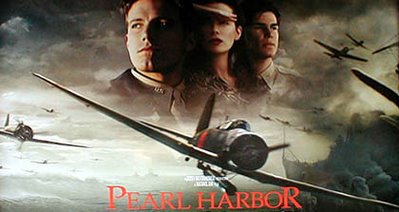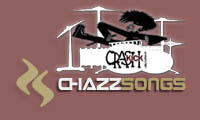The Pearl Harbor Deception

On 7 December 1941 the greatest disaster in United States history occurred. Truly this was and is, "'A date which will live in infamy.'"(Costello 1), but not for the bombing of Pearl Harbor, rather for the deception and the mis-guidance used by the Government and Franklin D. Roosevelt. In a purely artificial chess game Roosevelt sacrificed over 2400 American Seamen's lives, thanks to his power as Commander in Chief of the Armed Forces. By over-looking the obvious facts of an attack by Japan on Pearl Harbor, Roosevelt was able to control both the political and economic systems of the United States. Most of American society before the Pearl Harbor bombing believed in the idea of isolationism.
Franklin D. Roosevelt knew this, and knew the only way in which United States countrymen would take arms and fight in Europe's War was to be an overt action against the United States by a member of the Axis Power. Roosevelt also believed Hitler would not declare war on the United States unless he knew they were beatable. There are numerous accounts of actions by Roosevelt and his top armed forces advisors, which reveal they were not only aware of an attack by Japan, but also they were planning on it, and instigating that attack. On 7 October 1940, Lieutenant Commander Arthur H. McCollum, head of the Far East desk of the Office of Naval Intelligence, wrote the eight-action memo.
This memo outlined eight different steps the United States could do that he predicted would lead to an attack by Japan on the United States. The day after this memo was giving to Franklin D. Roosevelt, he began to implement these steps. By the time that Japan finally attacked the United States at Pearl Harbor on 7 December 1941, all eight steps had occurred (Willy 1). The eight steps consisted of two main subject areas; the first being a sign of United States military preparedness and threat of attack, the second being a forceful control on Japans trade and economy. The main subject area of the eight-action memo was the sign of United States military preparedness and threat of attack. McCollum called for the United States to make arrangements with both Britain (Action A) and Holland (Action B), for the use of military facilities and acquisition of supplies in both Singapore and Indonesia.
He also suggested for the deployment of a division of long-range heavy cruisers (Action D) and two divisions of submarines (Action E) to the Orient. The last key factor McCollum called for was to keep the United States Fleet in the vicinity of the Hawaiian Islands (Action F). Roosevelt personally took charge of Action's D and E; these actions were called "pop up" cruises. Roosevelt had this to say about the cruises, "'I just want them to keep popping up here and there and keep the Japs guessing (Stinnett 9).'" With the fleet located around Hawaii and particularly in Pearl Harbor a double-sided sword was created; it allowed for quicker deployment times into South Pacific Water, but more importantly it lacked many fundamental military needs, and was vulnerable due to its geographic location. To understand the true vulnerability of Pearl Harbor one must look at Oahu, the Hawaiian Island that the military base is located. The North part of the island is all mountains, these mountains hinder the vision of military look out points, making an attack from the North virtually a surprise until the sound of fighter planes are over head.
There were many key military needs that were missing from Pearl Harbor, and they were; a lack of training facilities, lack of large-scale ammunition and fuel supplies, lack of support craft such as tugs and repair ships, and a lack of overhaul facilities such as dry-docking and machine shops. Commander in Chief, United States Fleet - Admiral James O. Richardson, was outraged when he was told by President Roosevelt of his plans on keeping the fleet in Hawaiian Waters. Richardson knew of the problems and vulnerability of Pearl Harbor, the safety of his men and warships was paramount. In a luncheon with Roosevelt, Richardson confronted the President, and by doing so ended his military career. Four months later Richardson was removed as commander-in-chief, and replaced by Rear Admiral Husband Kimmel (Stinnett 11).
Kimmel by many top Naval personal was looked down upon on, for taking orders from Roosevelt and not considering the immediate dangers he was putting the fleet in. The second part of McCollum's eight-action memo was a forceful control on Japans trade and economy. He insisted that the Dutch refuse to grant Japanese demands for oil (Action G), and a complete embargo of all trade with Japan (Action H), by the United States. This embargo closely represented a similar embargo that was being imposed by the British Empire. McCollum also knew that if Japan controlled the Pacific, it would put a strain on America's resources for copper, rubber, tin, and other valuable goods. These imports from the Pacific were all essential to America's Economy, and to protect these trading routes McCollum insisted for all possible aid to be given to the Chinese government of Chiang Kai-shek (Action C).
Japan had some control over China due to a military operation, which took over part of the country. Thanks to the control, Japan took and used many raw goods from China that were not in abundance in their own homeland. The government of Chiang Kai-shek was completely against Japan, and with economic support from the United States, they were able to deny certain possessions from Japan. The United States Government and United States Navy by withholding important information about the bombing of Pearl Harbor have done everything they can do to protect the integrity of President Franklin D. Roosevelt and the government. True nationalist believe this information is withheld from the general public in order to protect national security, and not to hide a conspiracy that was created by the United States Government some fifty years ago.
This school of thought asks people and wants them to think, "How in the world could the President of the United States sacrifice over 2400 American seamen's life's, horrific amounts of damages to the Fleet, and tremendous amounts of destruction to Army fighter planes?" This group also asks, "In the past fifty years why has there not be one single piece of hard evidence which links Roosevelt to Pearl Harbor, or why has there not been one person who had top security clearance to come out and say something about Roosevelt and his involvement with the bombing?"
On 5 December 1941 at a Cabinet meeting, Secretary of the Navy Frank Knox said, "Well, you know Mr. President, we know where the Japanese fleet is?" "Yes, I know, ...Well, you tell them what it is Frank," said Roosevelt (Toland 294). Knox became extremely excited with the ok from Roosevelt, and he went to tell the group of where the Japanese were and where they were headed. Just as Knox was about to speak Roosevelt interrupted saying, " We haven't got anything like perfect information as to their apparent destination (Toland 294)." All Navy reports showed the Japanese were in Pacific Water, and were in a direction towards Hawaii and Pearl Harbor. Roosevelt knew this information, but one must wonder why in the world would he not want to tell his cabinet this information, unless he wanted to hide something? On 6 December 1941 at a White House dinner Roosevelt was given the first thirteen parts of a fifteen part decoded Japanese diplomatic declaration of war and said, "This means War (Toland 318)."
Later that night, Roosevelt along with top advisor Harry Hopkins, Henry Stimson, George Marshall, Secretary of the Navy Knox, with aides John McCrea and Frank Beatty deliberately sat through the night waiting for the Japanese to strike Pear Harbor (Toland 320). Not until the morning of 7 December 1941 at 7:55 Hawaii Time did Japan deliberately and forcefully attack the United States at Pearl Harbor, finally ending disillusioned isolationist ideas of an only European War. United States countrymen immediately ran to recruiting offices after the news of the attack, to join the armed forces and fight against the Japanese and Hitler.
Beyond a doubt Pearl Harbor was President Franklin D. Roosevelt's back
door into the European War. Roosevelt's decisions and actions were very much
so, deliberate and calculated, in order to lead a victorious Allied Powers in
World War II. By provoking the Japanese and the foreknowledge of an attack on
Pearl Harbor, Roosevelt along with his top advisors and the Federal
Government are truly to blame for the lost of American life's and American
property. 7 December 1941 shall be a day in American history, which will be
remembered as "a day of deceit."
Why did Roosevelt want to enter into World War II? Was it to defeat the
tyranny of Hitler? Stalin, who was our partner during the war, was even more
vicious and tyrannical than Hitler. Was it to stop the aggression of the
Japanese? Before the war, this country did everything it could to give Japan
no choice and goad them into waging war.
Roosevelt was a 33rd degree mason. That is the highest level one can attain
in the satanic Masonic order. One of objectives of the lucifer worshipping
Masonic order is to establish a one world government. After World War I these
people tried, and failed, to start a one world government organization, The
League of Nations. Realizing they would need another world war to finally
create such an organization, they manipulated world events, started and won
World War II, and created the United Nations, the tool for the final phase of
one world government.
Disclaimer


